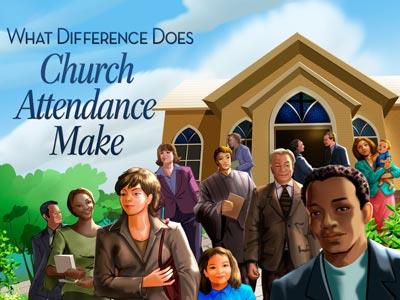-
Growth And Prosperity
Contributed by Dale Miller on Nov 28, 2017 (message contributor)
Summary: THIS SERMON DEALS WITH THE GROWTH OF THE CHURCH IN THE BOOK OF ACTS.
HFL
AUGUST 2, 2009
ACTS 6;1-7
1In those days when the number of disciples was increasing, the Grecian Jews among them complained against the Hebraic Jews because their widows were being overlooked in the daily distribution of food. 2So the Twelve gathered all the disciples together and said, “It would not be right for us to neglect the ministry of the word of God in order to wait on tables. 3Brothers, choose seven men from among you who are known to be full of the Spirit and wisdom. We will turn this responsibility over to them 4and will give our attention to prayer and the ministry of the word.”
5This proposal pleased the whole group. They chose Stephen, a man full of faith and of the Holy Spirit; also Philip, Procorus, Nicanor, Timon, Parmenas, and Nicolas from Antioch, a convert to Judaism. 6They presented these men to the apostles, who prayed and laid their hands on them.
7So the word of God spread. The number of disciples in Jerusalem increased rapidly, and a large number of priests became obedient to the faith.
An old farmer had plowed around a large rock in one of his fields for years. He had broken several plowshares and a cultivator on it. After breaking another plowshare one fall, and remembering all the trouble the rock had caused him through the years, he finally determined to do something about it. When he put his crowbar under the rock, he was surprised to discover that it was only about six inches thick and that he could break it up easily.
As he was carting it away he had to smile, remembering all the trouble that the rock had caused him and how easy it would have been to get rid of it sooner. There is often a temptation to bypass small obstacles when we're in a hurry to get a large problem solved. We simply don't want to stop and take the time to deal with it now. Like the old farmer, we "plow" around it.
I HAVE TOLD YOU IN THE PAST THAT I LIKE CEMETERIES. I LIKE THEM FOR THE INTERESTING READING ON THE STONES, BUT ALSO B/C THE CEMETERY IS THE ONLY PLACE IN TOWN WHERE YOU FIND PEOPLE WHO DON’T HAVE ANY PROBLEMS. IF YOU ARE ALIVE TODAY, THEN YOU HAVE PROBLEMS. THEY MAY NOT BE GREAT BIG, MASSIVE, CAN’T GET OVER THEM PROBLEMS, BUT GUARANTEED YOU HAVE PROBLEMS. WITH THIS REALIZATION IN MIND, WHAT WE NEED TO SEE IS HOW TO DEAL WITH THOSE PROBLEMS. I WANT TO SUGGEST TO YOU TODAY, THAT THE BIBLE HAS SOLUTIONS TO THE PROBLEMS THAT WE FACE. OUR TASK IS TO SEARCH TO FIND THE SOLUTION. AS I SEE IT, THERE ARE THREE WAYS TO FIND THE SOLUTION. ONE IS TO FIND THE EXPERT AND LET HIM TELL ME. HERE IS AN EXAMPLE; THE EXPERT IS HIRED TO GO TO A FACTORY AND FIX A MACHINE THAT HE HAS BUILT. HE WALKS IN, LOOKS AT THE MACHINE, PULLS A VERY LARGE SLEDGE HAMMER OUT, AND HITS THE MACHINE. IT IMMEDIATELY BEGINS TO WORK AS IT SUPPOSED TO. HE STOPS BY THE INVOICE OFFICE AND LEAVES A BILL FOR $1,000.00 THE PRESIDENT OF THE FACTORY GETS THE BILL AND HE SAYS, THAT EXPERT WAS ONLY IN MY FACTORY FOR 10 MINUTES. SO HE SENDS A LETTER AND TELLS THE EXPERT HE WANTS AN ITEMIZED LIST TO JUSTIFY THE COST. THE EXPERT WRITES BACK, STRIKING THE MACHINE, COST 10 DOLLARS. KNOWING WHERE TO STRIKE THE MACHINE, COST 990 DOLLARS. THAT IS ONE WAY, ANOTHER WAY TO FIND THE SOLUTION IS THIS; EXAMINE THE PROBLEM AND DETERMINE IF THERE IS A FORMULA THAT MIGHT WORK. HERE IS THE TYPICAL FORMULA FOR PROBLEM SOLVING; clarifying description of the problem, analyzing causes, identifying alternatives, assessing each alternative, choosing one, implementing it, and evaluating whether the problem was solved or not. THERE IS ONE OTHER APPROACH AND IT GOES LIKE THIS; WE DON’T HAVE PROBLEMS, WE HAVE OPPORTUNITIES. A SHOE COMPANY SENT TWO SALESMEN TO AFRICA. WITHIN A SHORT TIME THEY RECEIVED TWO TELEGRAMS BACK. THE FIRST SAID, SEND ME HOME, NO SALES HERE, NO ONE WEARS SHOES. THE SECOND SAID, SEND ME ALL THE SHOES YOU CAN IMMEDIATELY, NO ONE HERE WEARS SHOES. DO YOU SEE A PROBLEM OR AN OPPORTUNITY?
THE EARLY CHURCH WAS FACED WITH A PROBLEM/ OPPORTUNITY. THEY HAD GROWN SO FAST, AND SO MANY PEOPLE WERE COMING INTO THE CHURCH; THEY DIDN’T KNOW HOW TO PROPERLY DISTRIBUTE THE FOOD TO THE WIDOWS AND ORPHANS. THE CHURCH WAS BASICALLY CENTRALIZED IN JERUSALEM, AND THE NUMBER WAS NOW CLOSE TO 20,000 PEOPLE. WITH THOSE KINDS OF NUMBERS, IT IS EASY TO OVERLOOK PEOPLE.
WITHIN THE JERUSALEM CHURCH THERE WERE TWO BASIC PEOPLE GROUPS. ONE WAS THE TRADITIONAL JEW WHO HAD BECOME A CHRISTIAN, THESE WERE THE HEBREW JEWS. THE OTHER GROUP WAS THE GREEK SPEAKING JEW. THESE WERE JEWISH, BUT THEY HAD NOT ALWAYS LIVED IN JERUSALEM AND THEY HAD TAKEN ON SOME OF THE CUSTOMS OF THE GREEK WORLD.

 Sermon Central
Sermon Central



